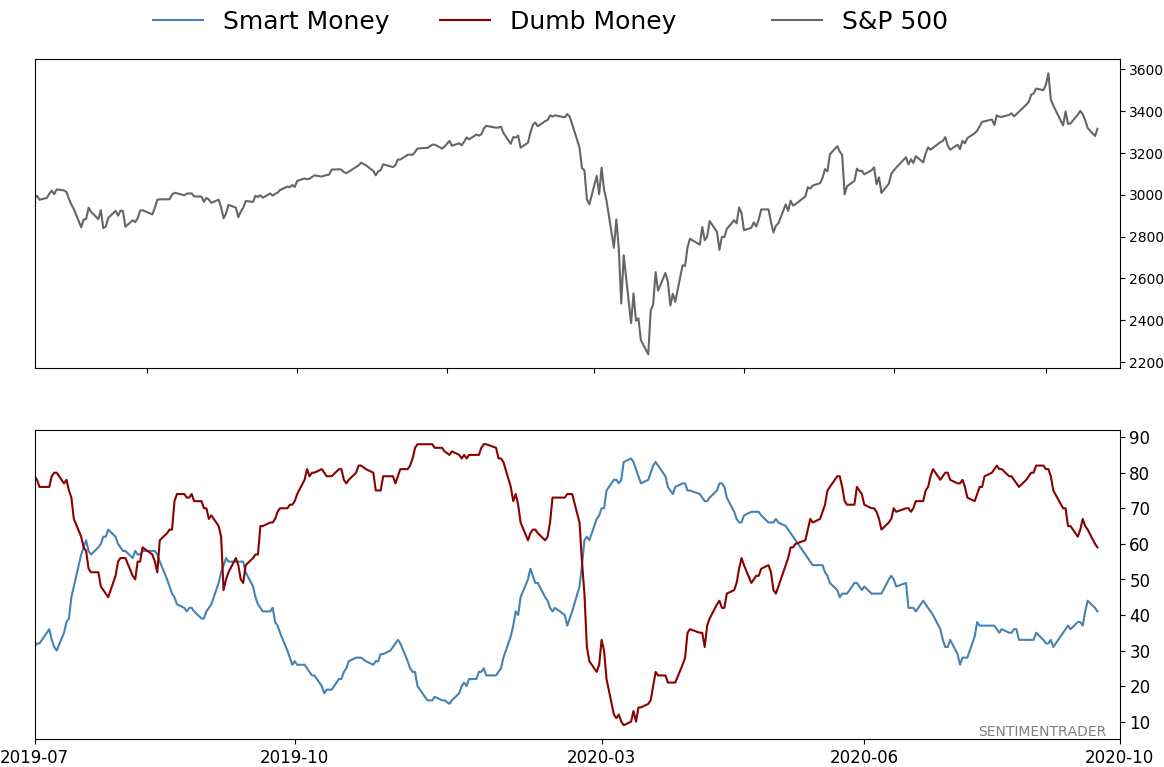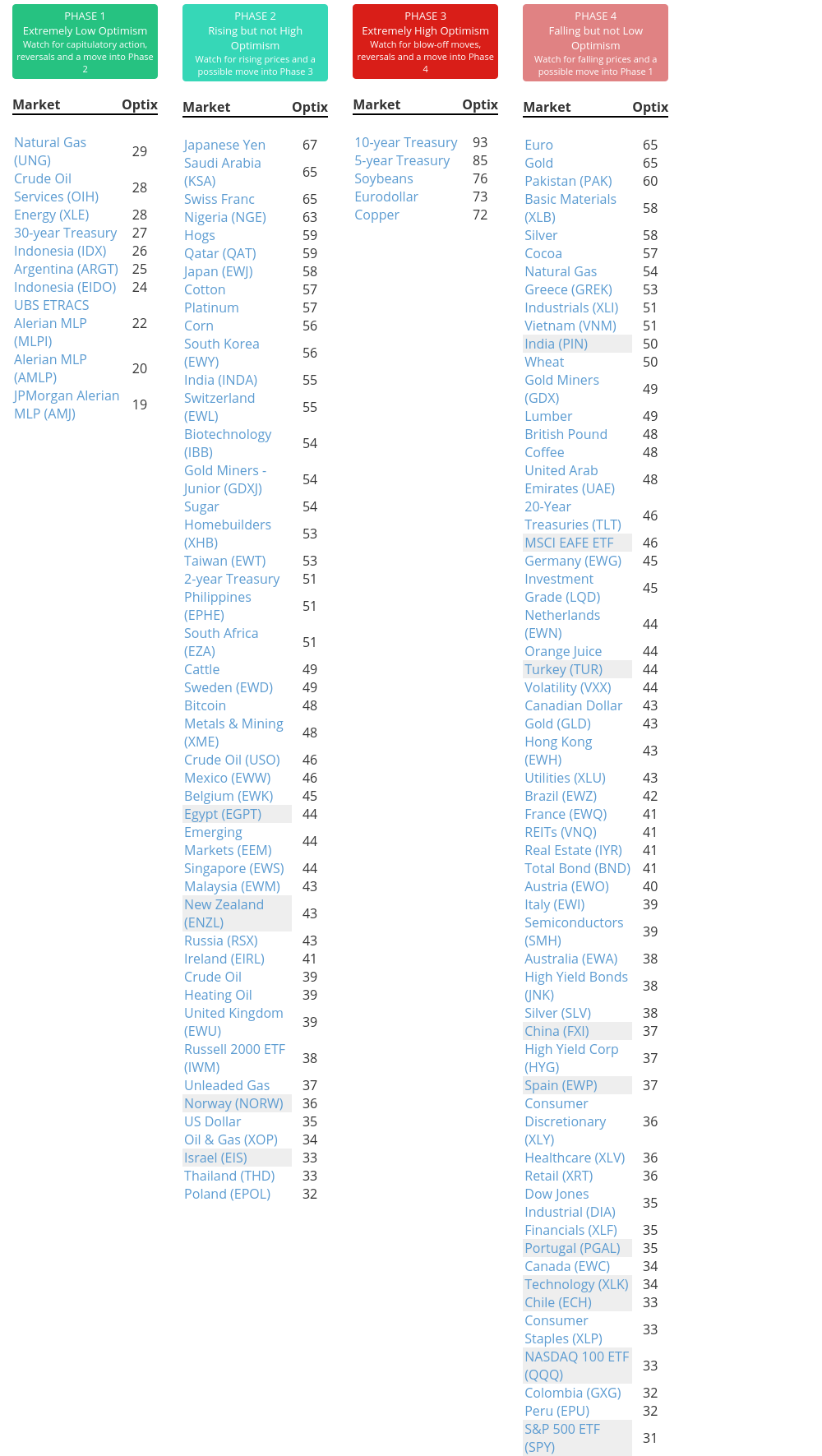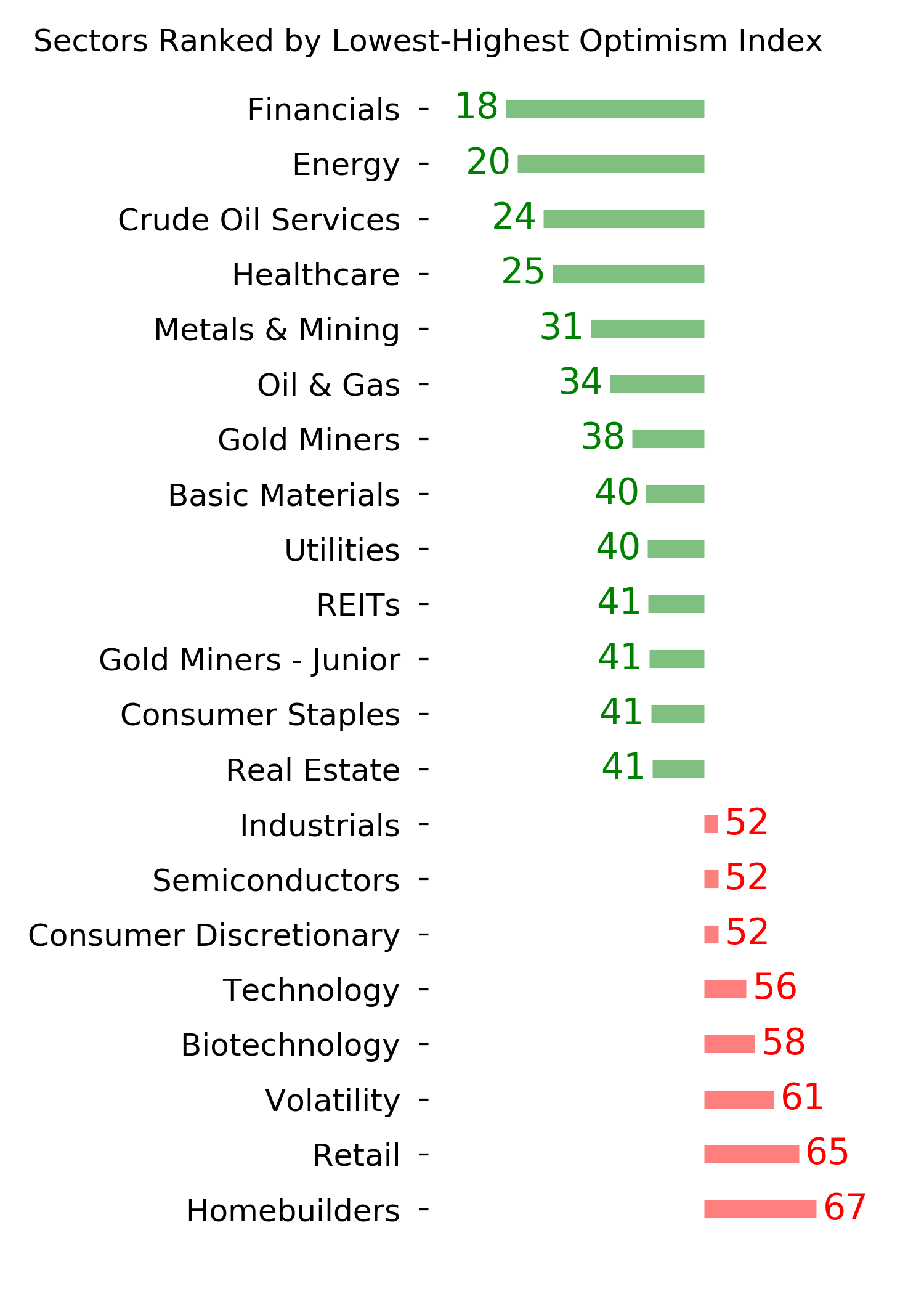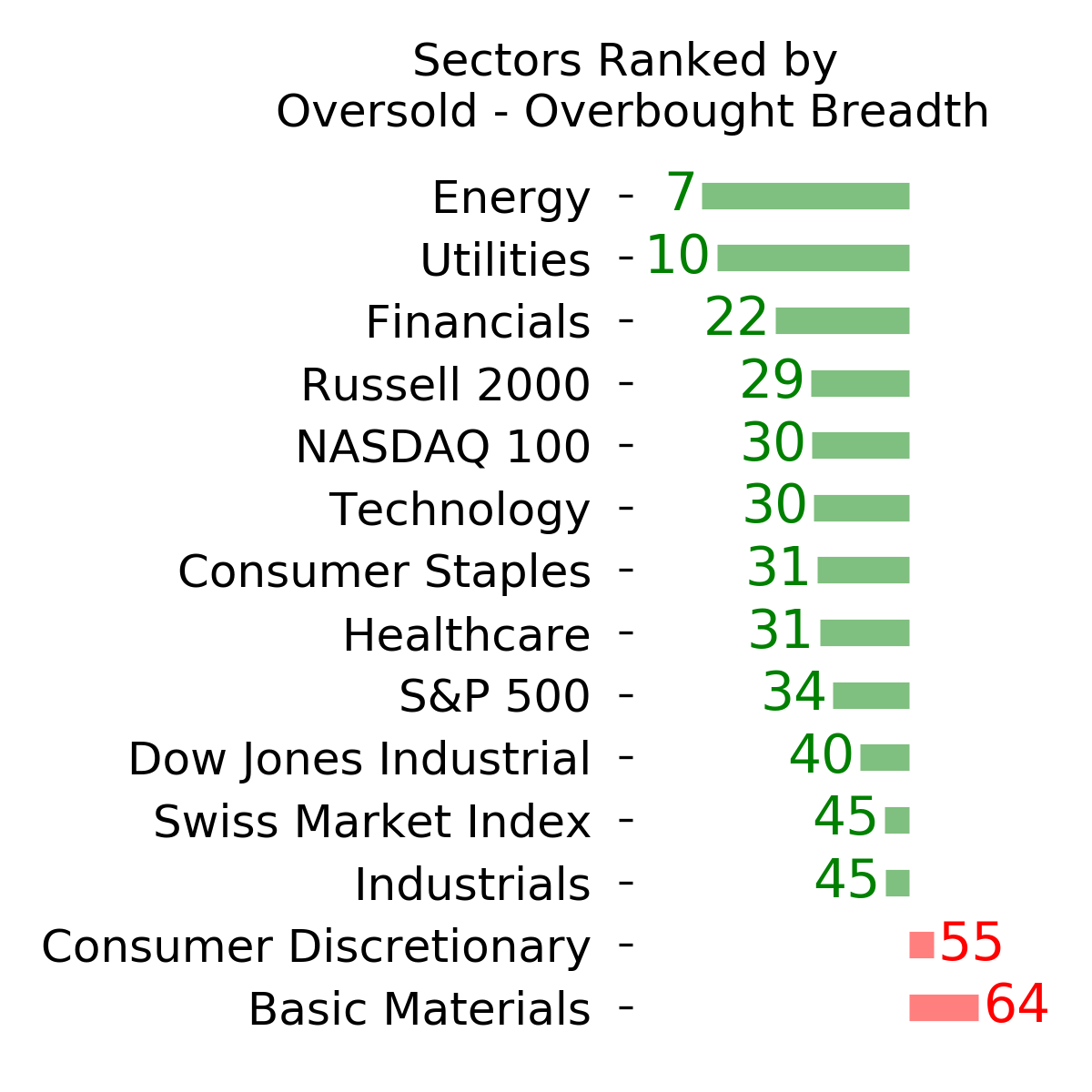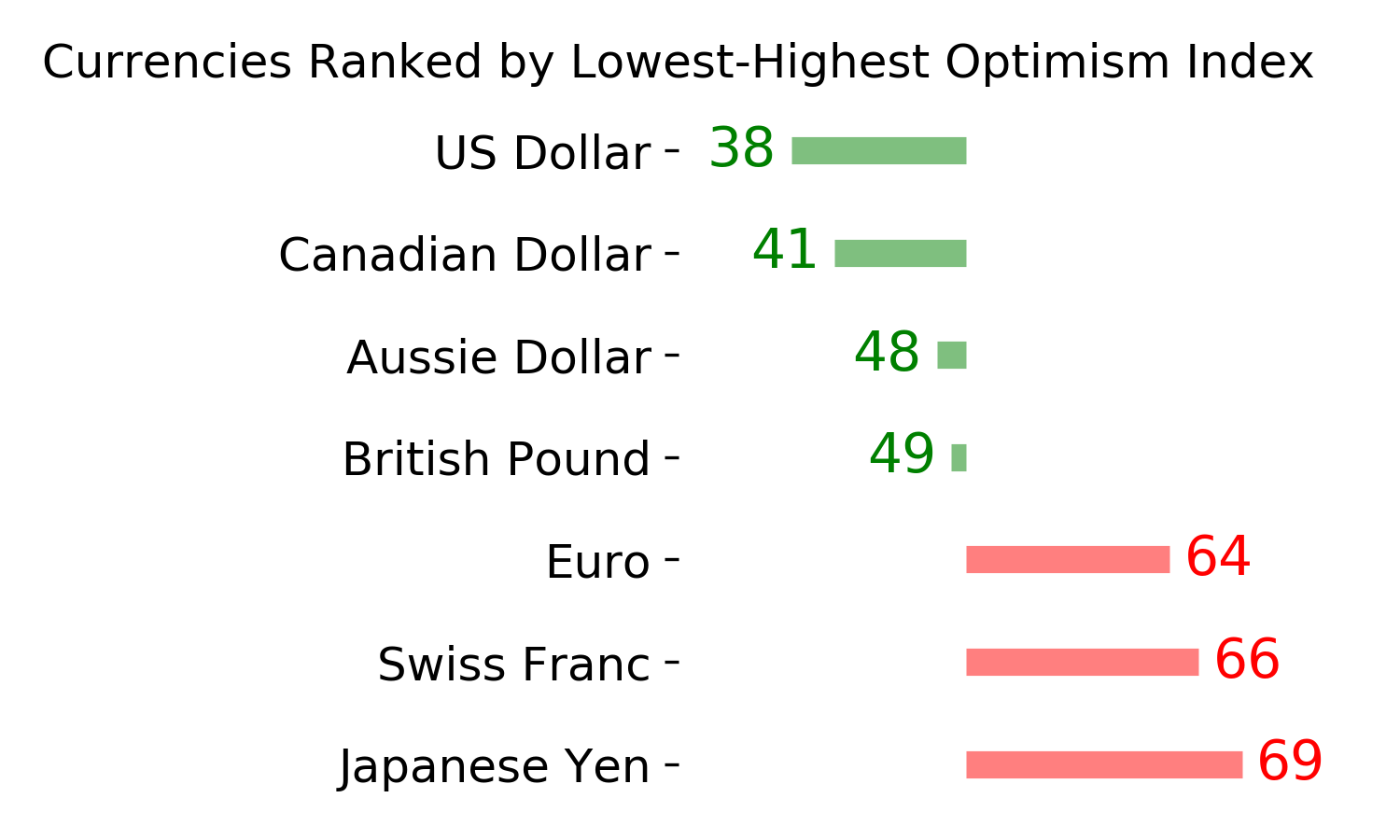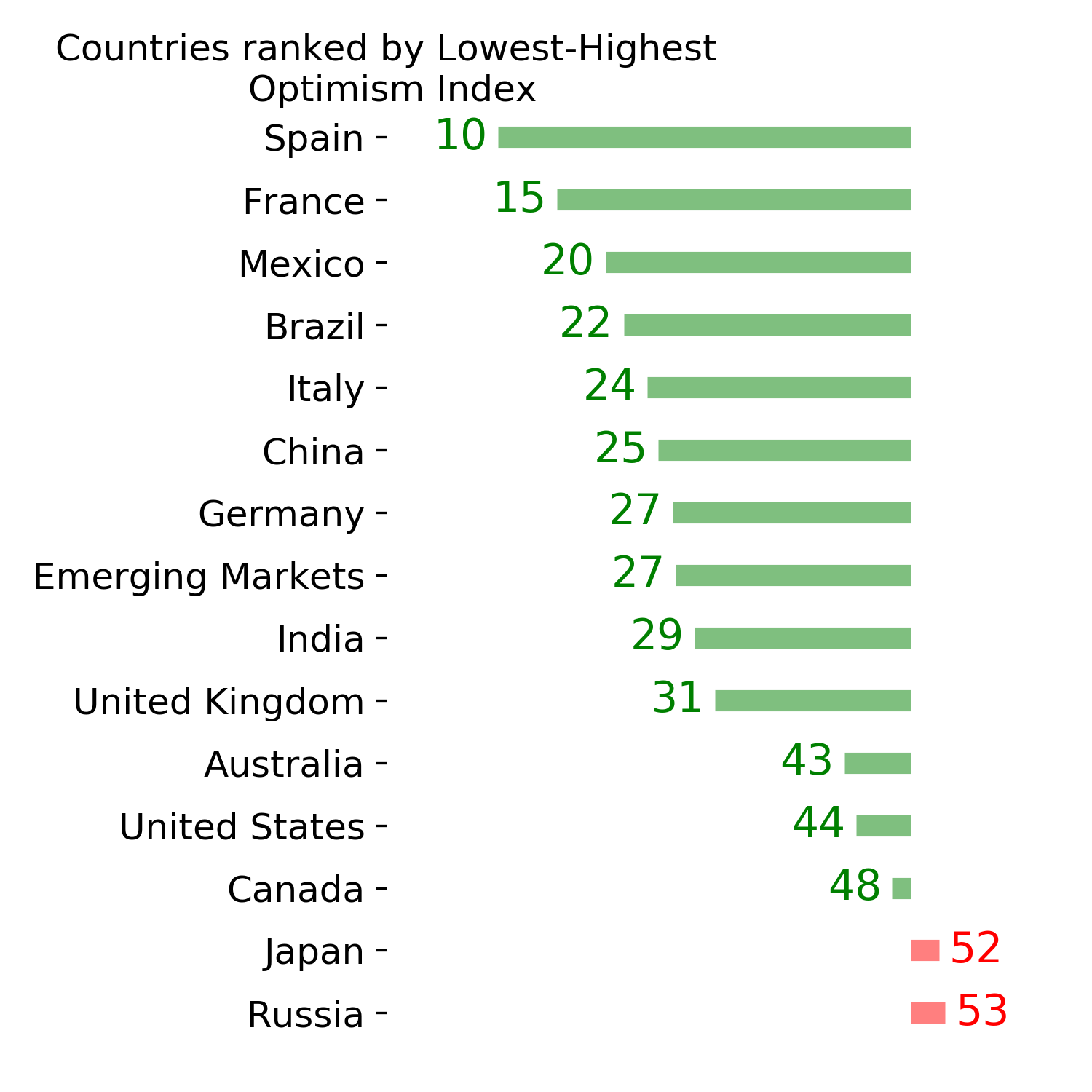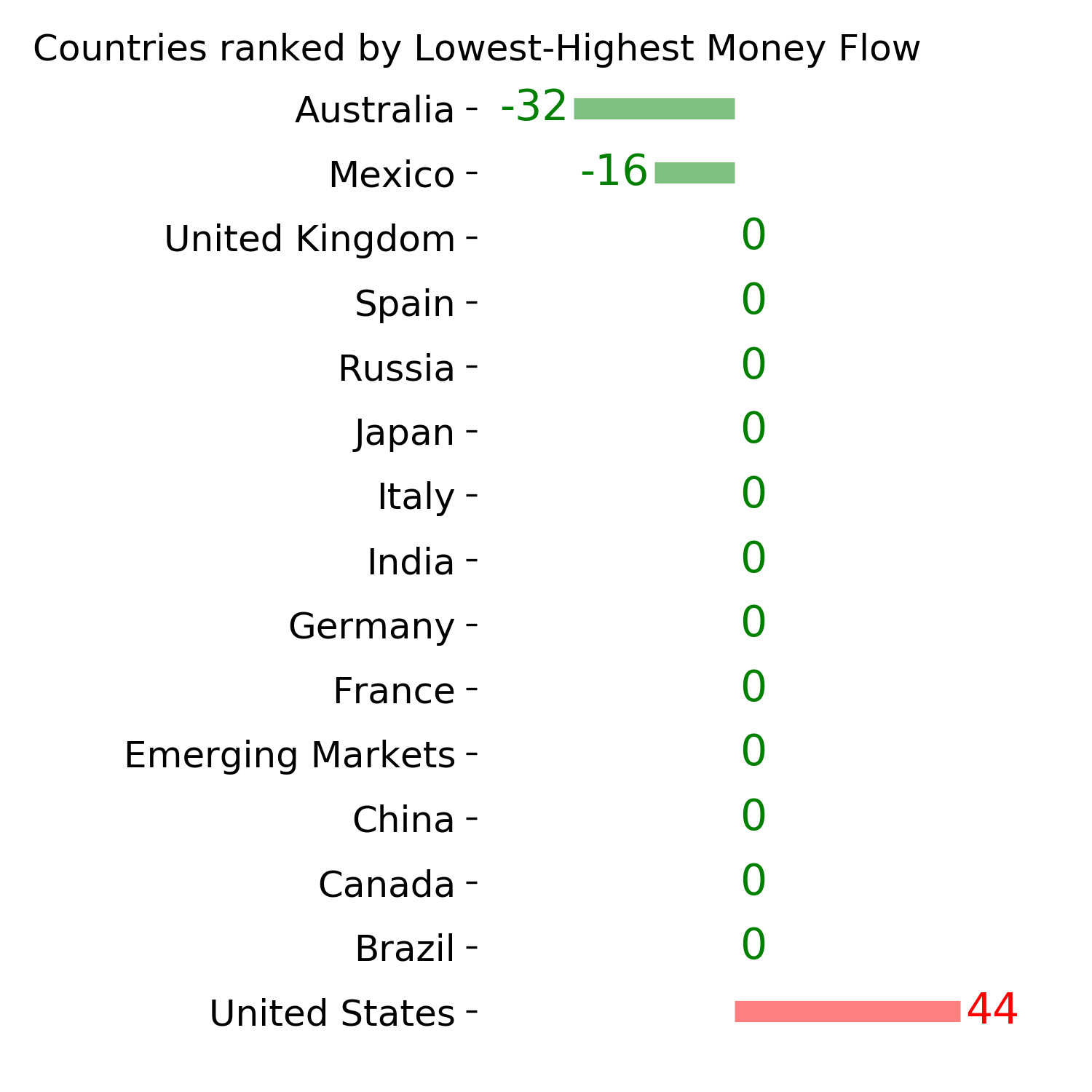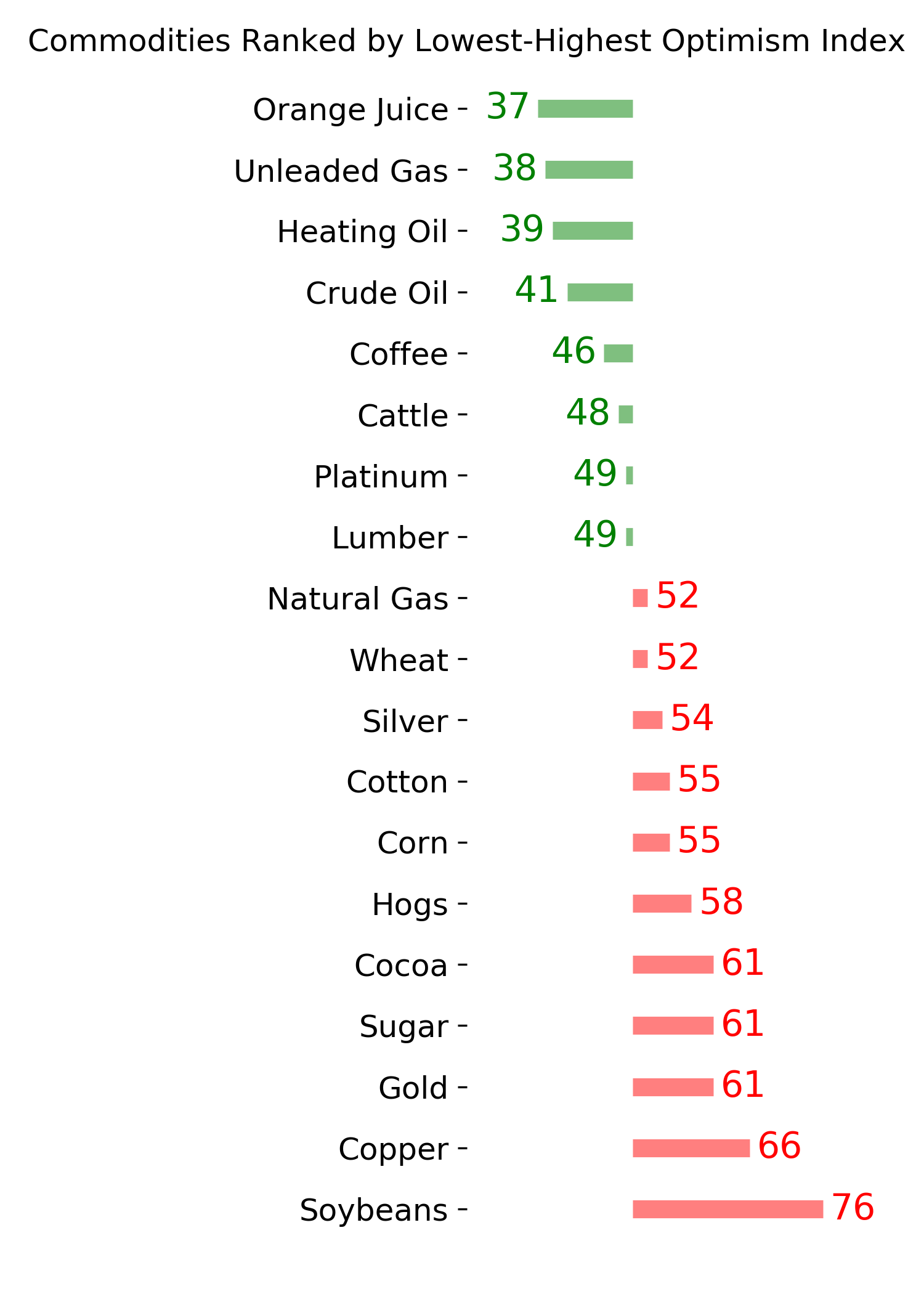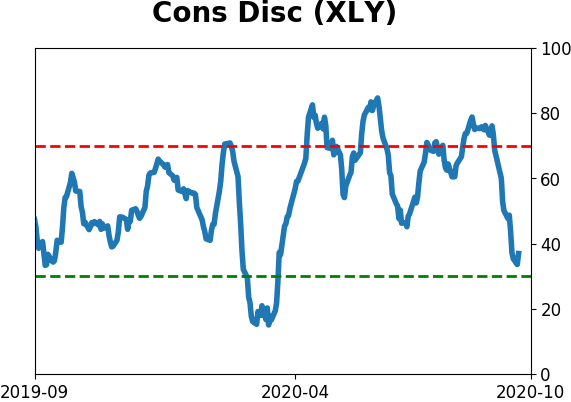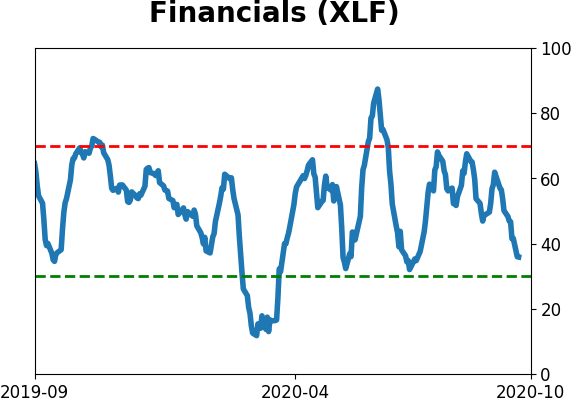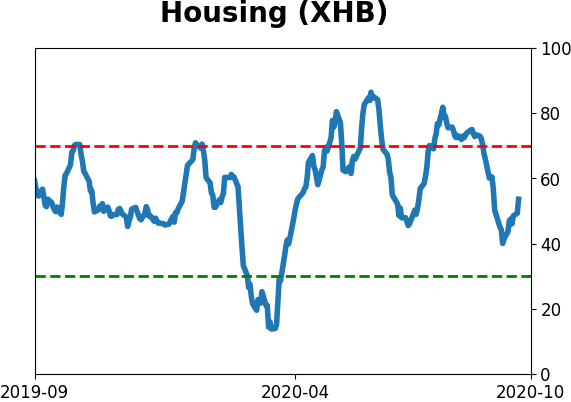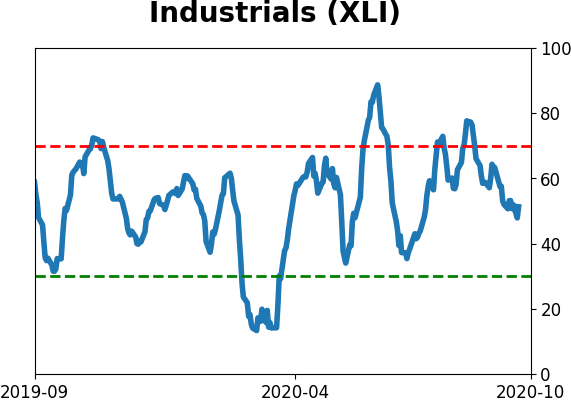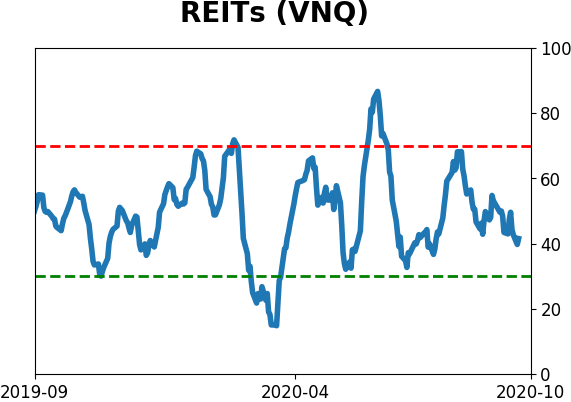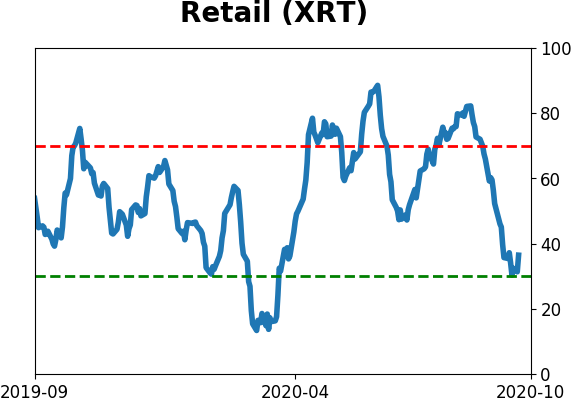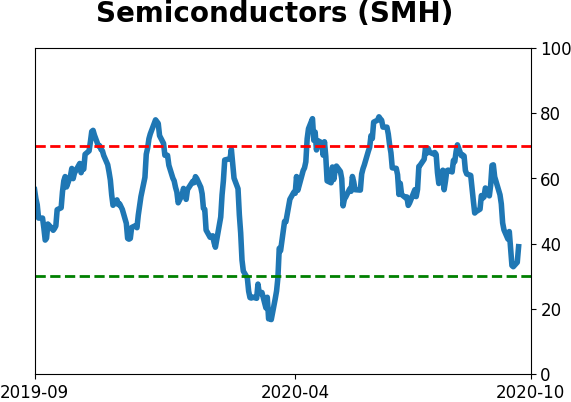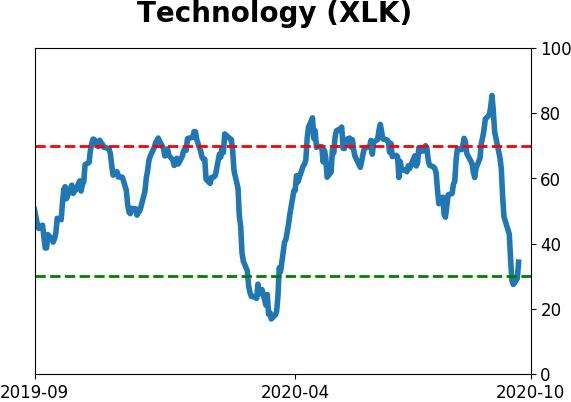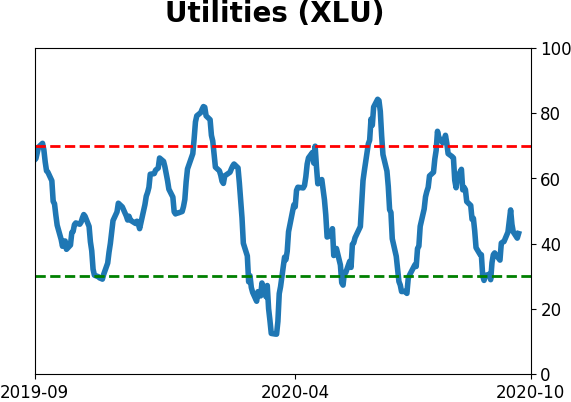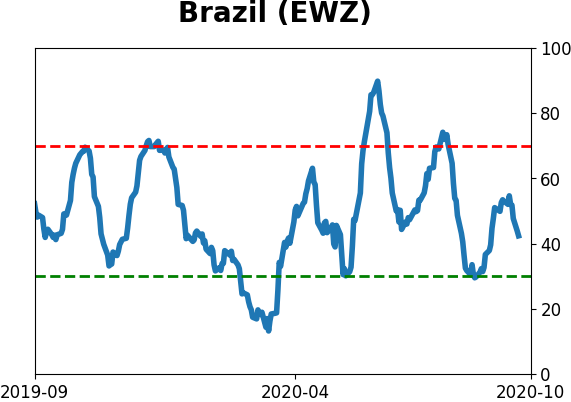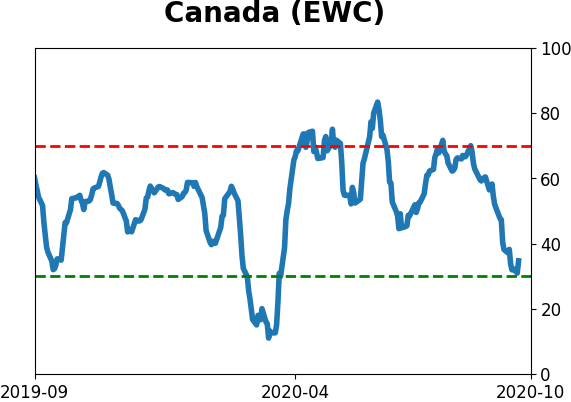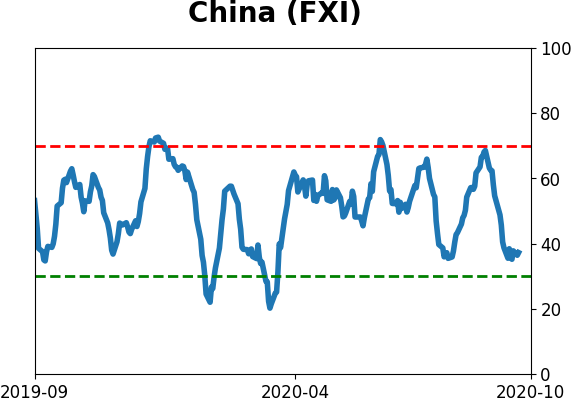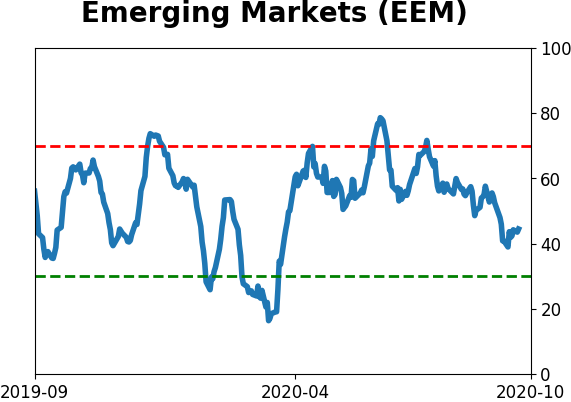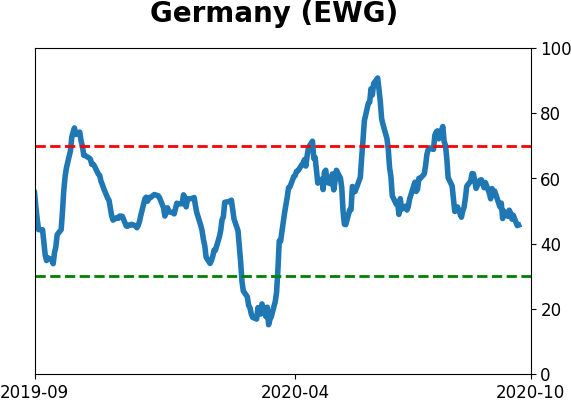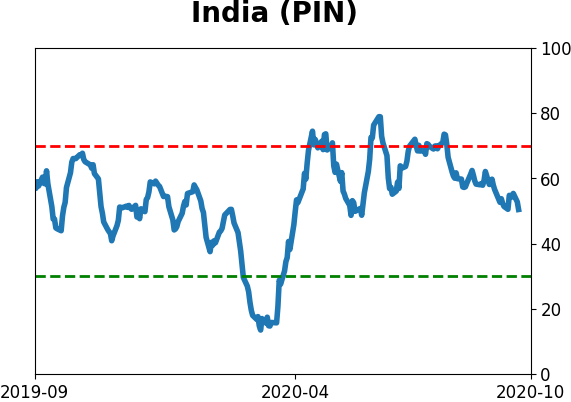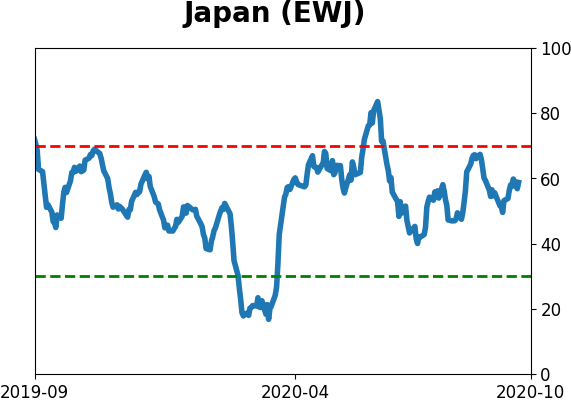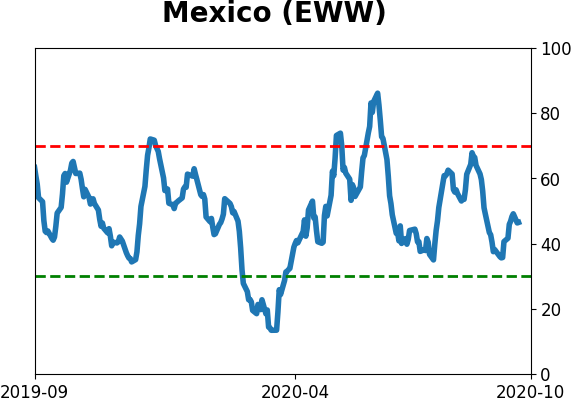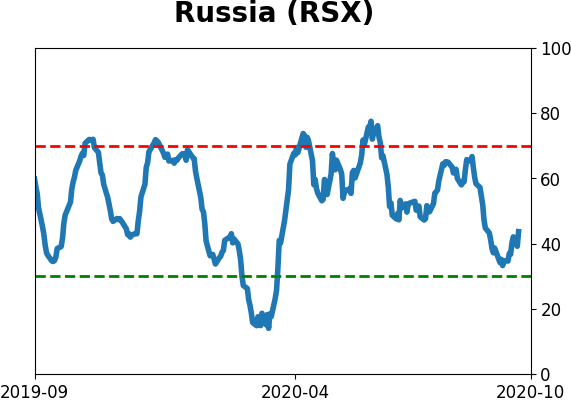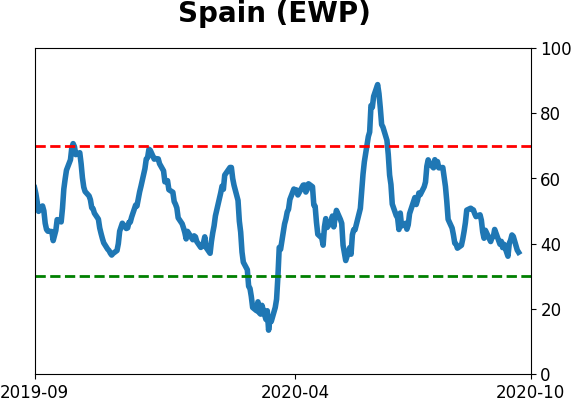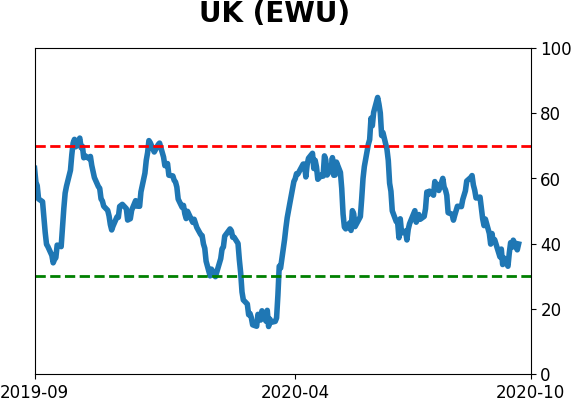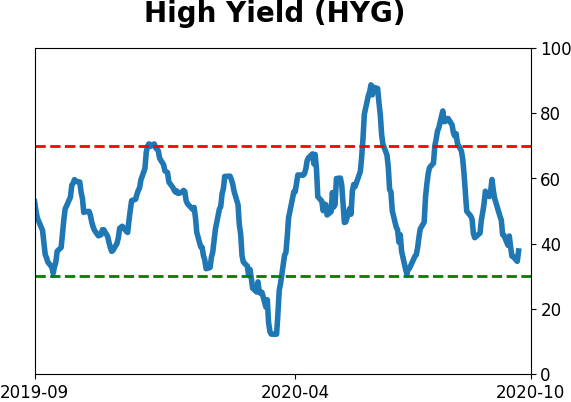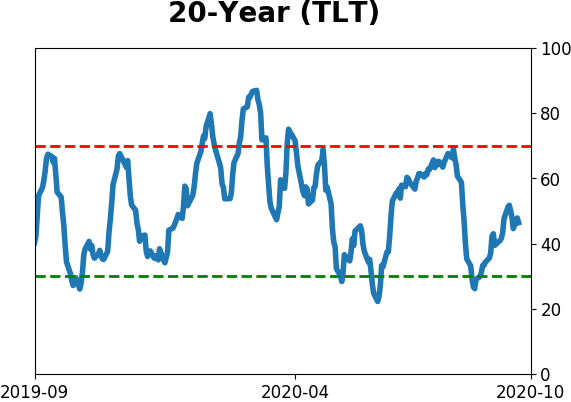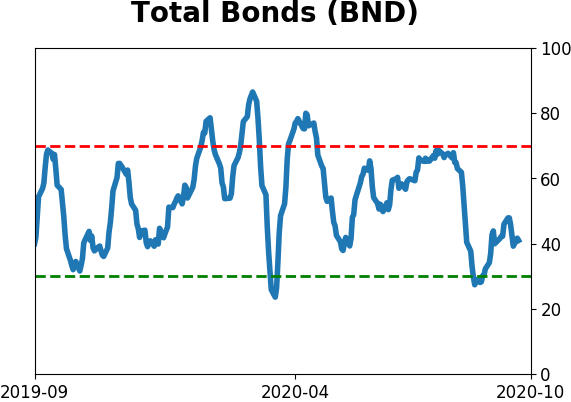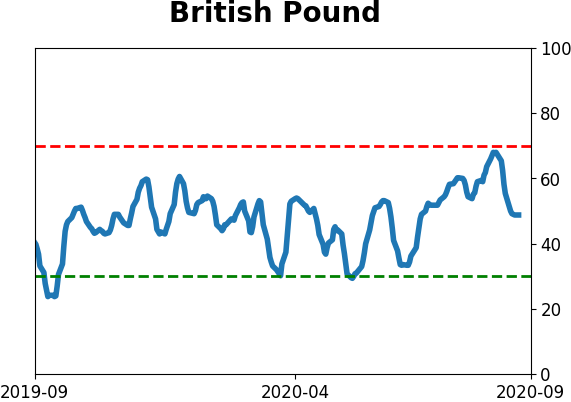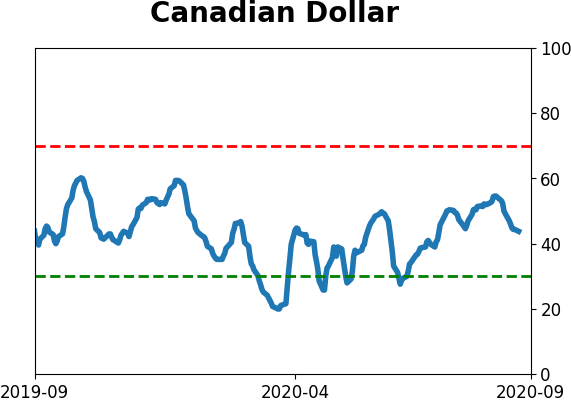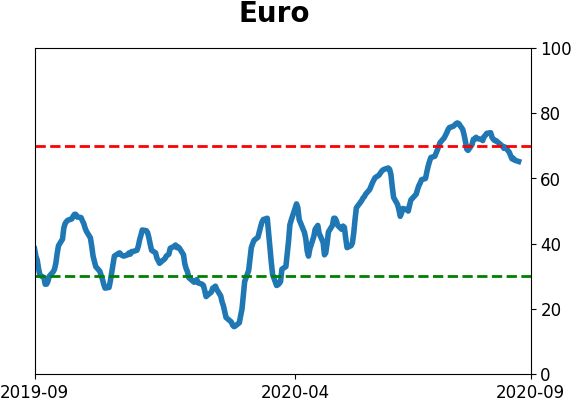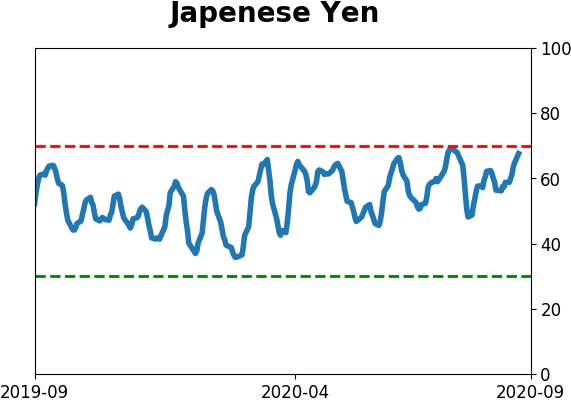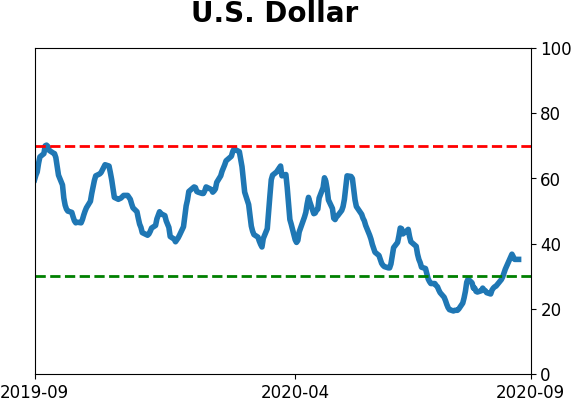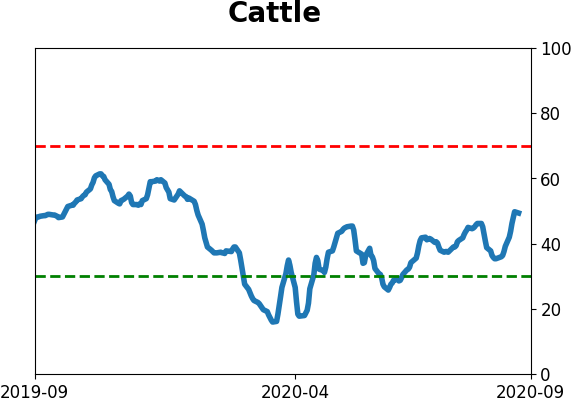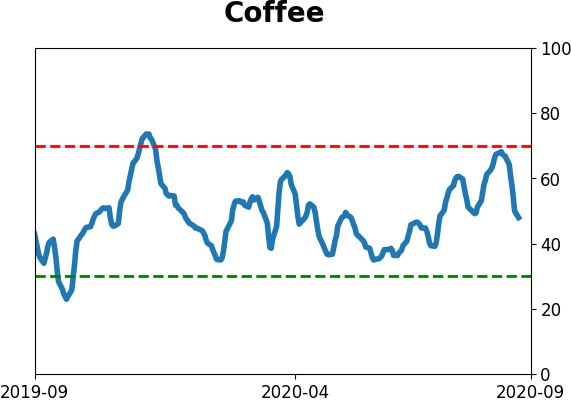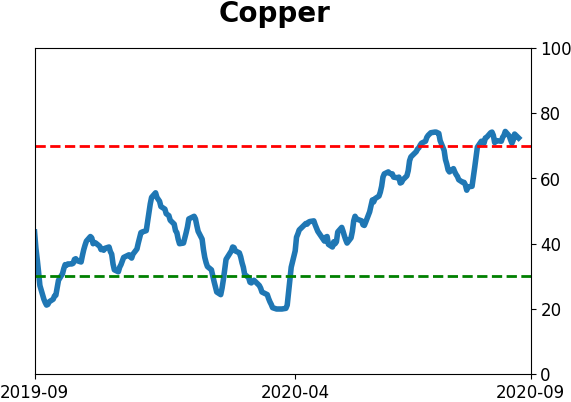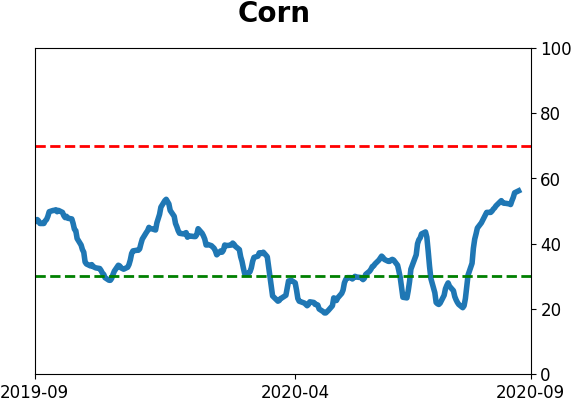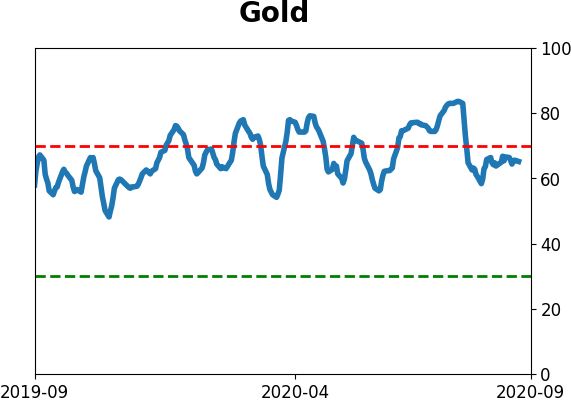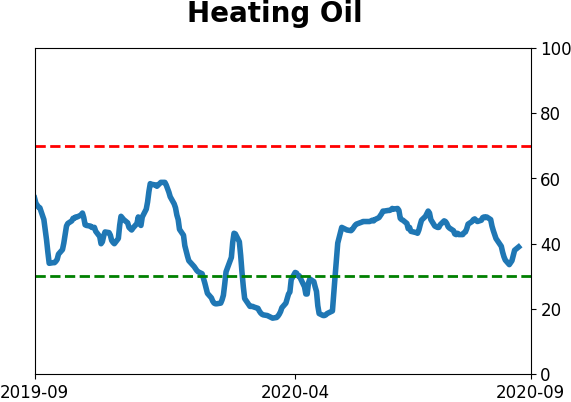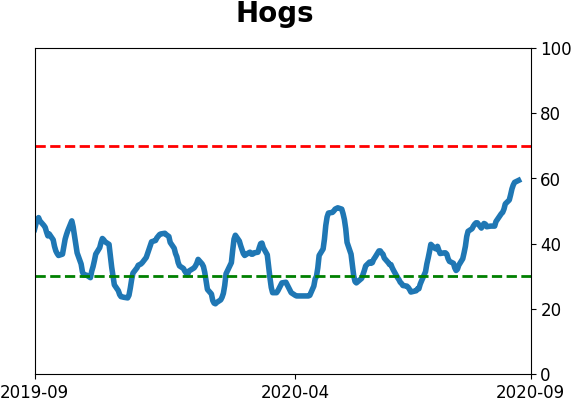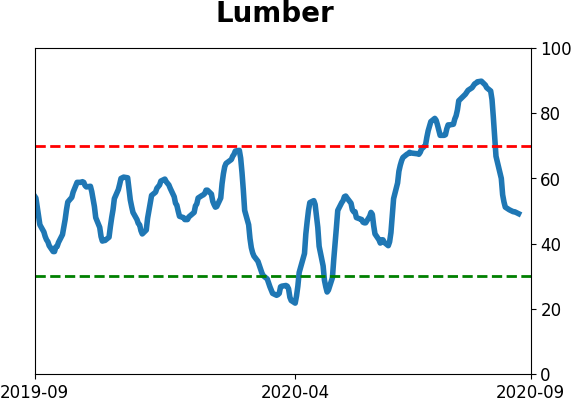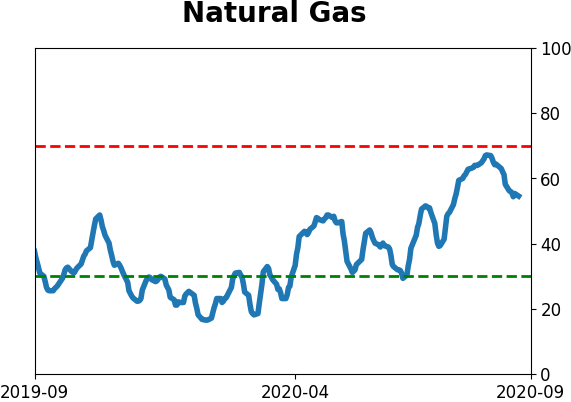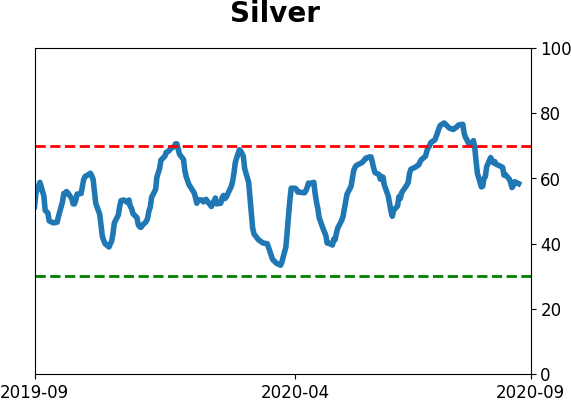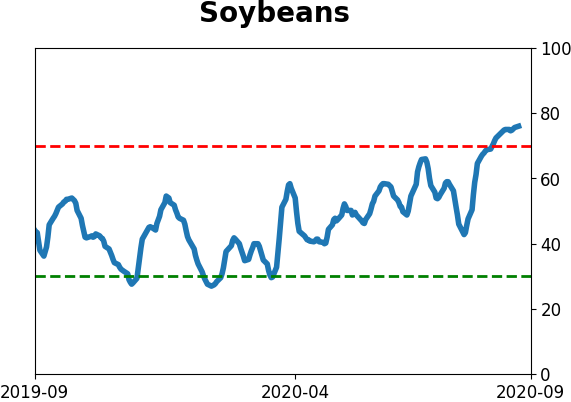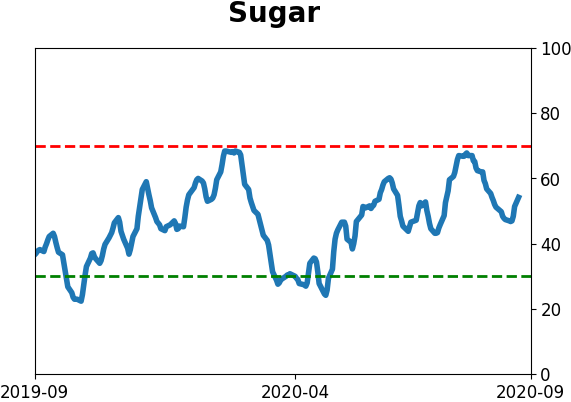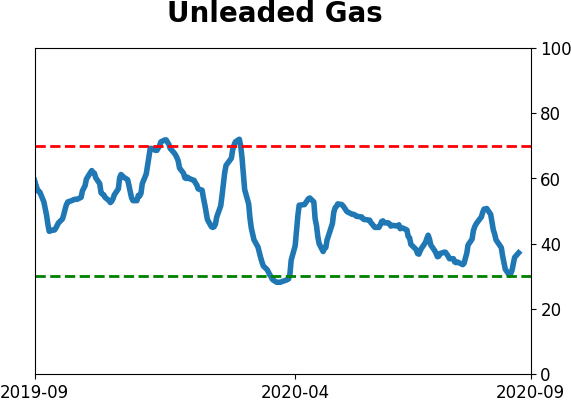Headlines
|
|
Streak of highs beating lows finally ends:
For the first time in more than 4 months, there were more 52-week lows than 52-week highs among securities traded on the NYSE. Stocks struggle when this figure is negative; the sole caveat is that after a long streak of positive momentum, the first drop into negative territory has preceded good medium-term returns.
Broader market is shaking off the influence of Big Tech:
In recent years, the S&P 500 has been highly correlated to changes in the Nasdaq 100. That has plunged lately as the market has shrugged off the influence of big tech stocks. Other times when the correlation between them dropped, it was a shorter-term weight on tech.
Dollar turns around: On Friday, the S&P 500 slipped below its 50-day moving average for the first time in months and now on Tuesday the U.S. dollar just rose above its own 50-day for the first time since May. Intermarket relationships have been pretty tight lately. We'll take a closer look at this on Wednesday, but when the dollar ended a long streak below its 50-day average during long-term downtrends, it sported a negative return 16 out of 19 times at some point during the next 1-3 months. It's been really hard for the currency to hold positive momentum.
Bottom Line:
|
Smart / Dumb Money Confidence
|
Smart Money Confidence: 41%
Dumb Money Confidence: 59%
|
|
Risk Levels
Stocks Short-Term

|
Stocks Medium-Term

|
|
Bonds

|
Crude Oil

|
|
Gold

|
Agriculture

|
|
Research
BOTTOM LINE
For the first time in more than 4 months, there were more 52-week lows than 52-week highs among securities traded on the NYSE. Stocks struggle when this figure is negative; the sole caveat is that after a long streak of positive momentum, the first drop into negative territory has preceded good medium-term returns.
FORECAST / TIMEFRAME
None
|
Ever since May 14, more securities on the NYSE have been hitting 52-week highs than 52-week lows. For the first time since then, more than 4 months, that changed with more lows than highs on Monday.
Below, we can see that when the net percentage of stocks at a 52-week low is greater than those at a 52-week high, the S&P 500 returned an annualized +3.9% versus +10.8% when this figure was positive.
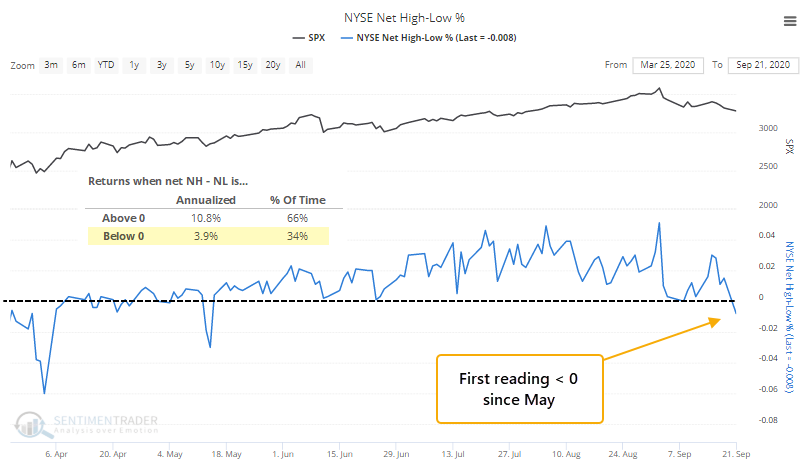
Monday's session ended a streak of nearly 90 days with a positive net number of 52-week extremes. That stopped one of the longer streaks in more than 50 years.
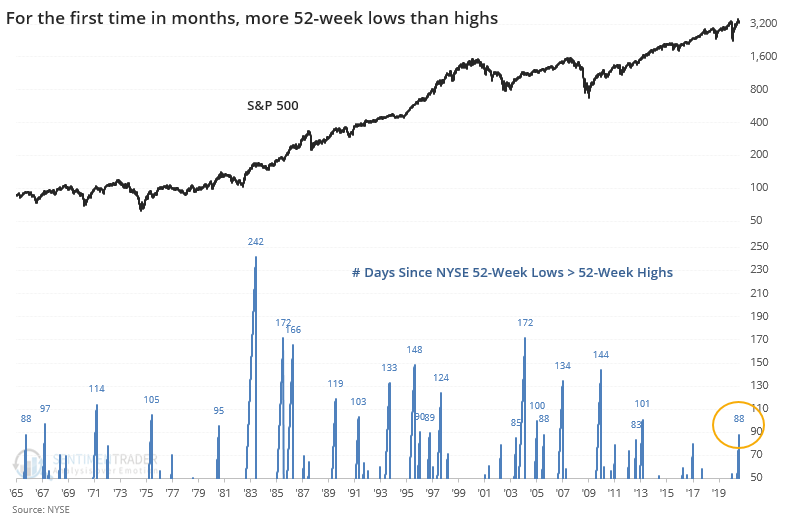
After other long streaks ended, the S&P struggled a bit short-term, with higher risk than reward, but showed good medium-term returns.
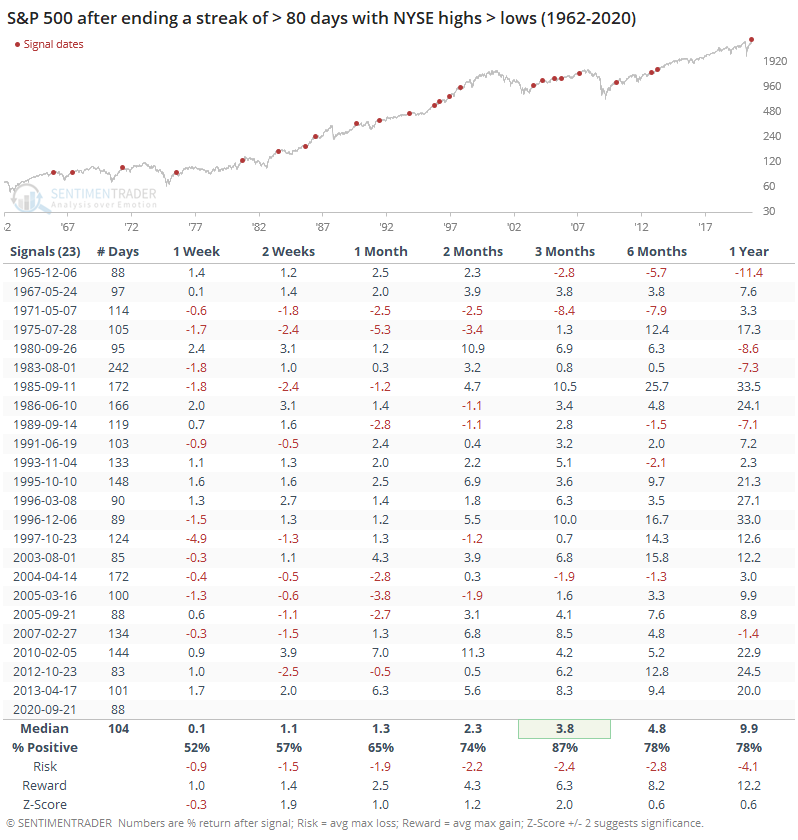
Over the next 3 months, the S&P returned a median +3.8%, well above a random 3-month return over the study period. There were only 3 losses out of the 23 signals, and 2 of those were less than -3%. The other loss was made up in the months ahead, so there were no true failures.
There are a lot of crosscurrents right now, which makes this a tricky juncture. Momentum has shifted and indexes have quickly fallen into a correction, or approximately so. There are still those pesky signs of supercharged speculation from options traders.
And yet when we've seen positive momentum as we have in recent months, especially in breadth statistics which can be more meaningful than just the price action of major indexes, future medium-term returns tended to be quite positive. This suggests that if we saw further short-term weakness, which would hopefully wring out some of those speculative juices, it should bring in those investors who missed some of the recent momentum.
BOTTOM LINE
In recent years, the S&P 500 has been highly correlated to changes in the Nasdaq 100. That has plunged lately as the market has shrugged off the influence of big tech stocks. Other times when the correlation between them dropped, it was a shorter-term weight on tech.
FORECAST / TIMEFRAME
None
|
For the first time in almost 2 years, the broader market is shaking off the influence of the biggest tech stocks.
The newsletter Daily Shot noted that over the past 90 days, the correlation between the S&P 500 and Nasdaq 100 has dived. It's gone on longer than that - over the past 6 months, the correlation between daily changes in the two indexes has dropped below 0.9 (on a scale from +1.0 to -1.0). That's the lowest since 2018.
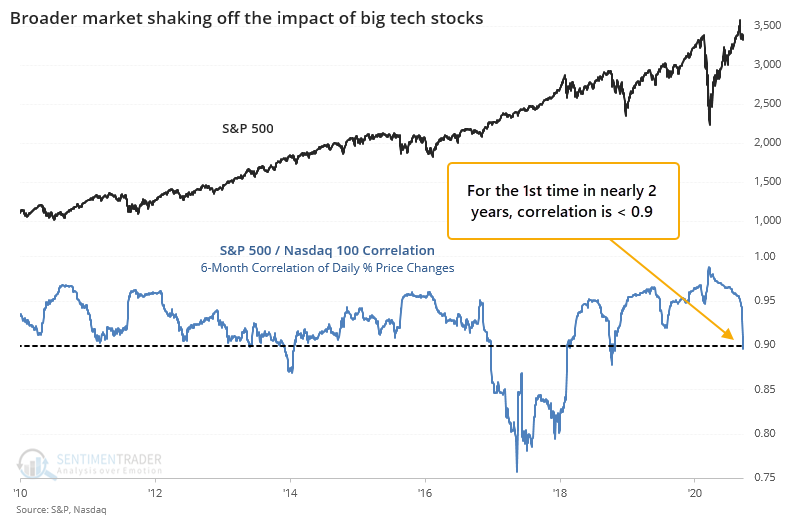
Historically, such a high sustained correlation like we've seen in the past decade is unusual.

When big tech stocks' influence started to wane for the first time in a while, it weighed on their shorter-term returns.
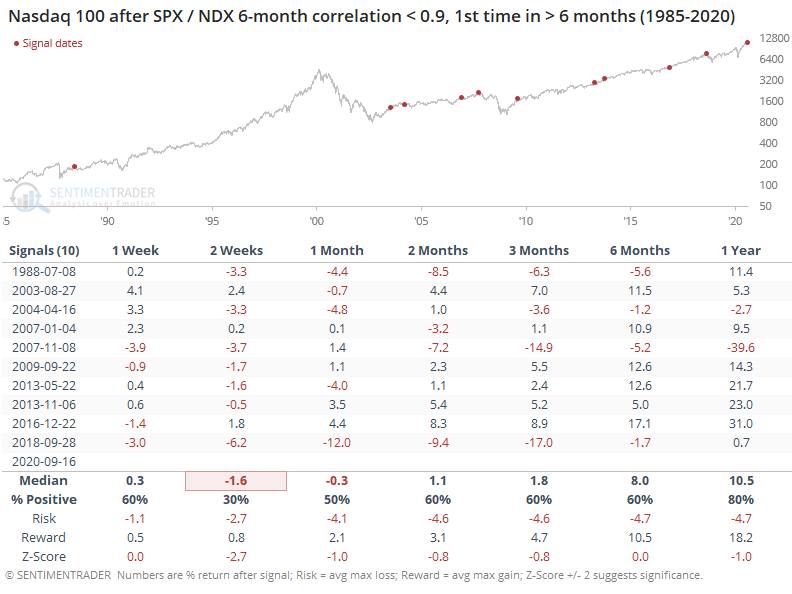
Same for the broader market but to a lesser degree.

That means the ratio between them favored the S&P over the shorter-term but since so many of the signals occurred in the past 20 years, the longer-term trend was still away from the S&P and toward the Nasdaq.
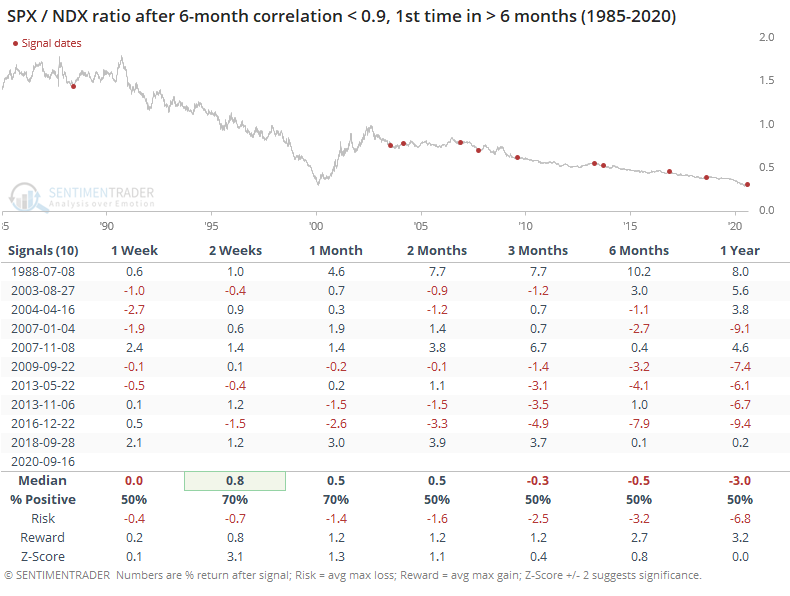
While these big stocks led the market on Monday, when their influence starts to wane, it's been at least a shorter-term positive influence for the broader market.
Active Studies
| Time Frame | Bullish | Bearish | | Short-Term | 0 | 1 | | Medium-Term | 1 | 12 | | Long-Term | 47 | 2 |
|
Indicators at Extremes
Portfolio
| Position | Description | Weight % | Added / Reduced | Date | | Stocks | RSP | 15.2 | Reduced 4.2% | 2020-09-03 | | Bonds | 10% TLT, 10% BND, 10% SCHP | 30.0 | Added 30% | 2020-09-09 | | Commodities | GCC | 2.4 | Reduced 2.1%
| 2020-09-04 | | Precious Metals | GDX | 5.0 | Added 5% | 2020-09-09 | | Special Situations | XLE | 4.9 | Added 5.1% | 2020-09-03 | | Cash | | 42.5 | | |
|
Updates (Changes made today are underlined)
After stocks bottomed on March 23rd, they enjoyed a historic buying thrust and retraced a larger amount of the decline than "just a bear market rally" tends to. Through June, there were signs of breadth thrusts, recoveries, and trend changes that have an almost unblemished record at preceding higher prices over a 6-12 month time frame. On a shorter-term basis, our indicators have been showing high optimism, with Dumb Money Confidence recently above 80%, along with signs of reckless speculation during what appears to be an unhealthy market environment, historically a bad combination. While there are certainly some outlier indicators that are showing apathy or even outright pessimism, a weight-of-the-evidence approach suggests high risk over a multi-week to multi-month time frame. That has been the case since July, even arguably June and yet the major indexes hit continual new highs through late August. With the indicators and studies failing to precede any weakness, I've been hesitant to lower my already-low exposure. I am getting increasingly anxious about the oddities we're seeing, though, and lowered it again. This account is mostly about comfort with risk for me, and right now I'm not at all comfortable with any of it. In more than 25 years of experience, this is the oddest market I've ever seen. I lowered exposure again - likely the lowest I'm willing to go at this point given longer-term positives - and decided to switch to an equal-weight version of the S&P 500 index. I've become intensely uncomfortable with the concentration in the cap-weighted index. Our studies have been mixed with regard to the potential for the equal-weight version to outperform the cap version going forward, so historical support isn't overwhelming. I'm also increasingly interested again in energy stocks, starting with a small allocation. I got burned in March with the unprecedented geopolitical spat that hammered those stocks then but the longer-term setup is decent. In this account, I’ve roughly followed what has become known as the All Weather portfolio popularized by Ray Dalio. It allocates across four broad assets, designed to hold up no matter the market environment. The goal is modest positive returns while limiting large, sustained losses. I typically use popular ETFs, with low costs. At times, I will swap out for a fund I believe has better prospects, or simply lower fees if not. At other times, I will diverge quite a bit from baseline allocations, largely depending on the indicators and studies we discuss on the site. I've gotten away from this in the past, using "cash" as a substitute for "bonds" and with rates stuck at 0%, that has become less appetizing. I'm trying to get back more toward the baselines with less dramatic swings in either direction. The base allocation I use is the following: Stocks: 35%
Bonds: 45%
Precious Metals: 7.5%
Commodities: 7.5%
Cash / Special Opportunities: 5%
RETURN YTD: -1.5% 2019: 12.6%, 2018: 0.6%, 2017: 3.8%, 2016: 17.1%, 2015: 9.2%, 2014: 14.5%, 2013: 2.2%, 2012: 10.8%, 2011: 16.5%, 2010: 15.3%, 2009: 23.9%, 2008: 16.2%, 2007: 7.8%
|
|
Phase Table
Ranks
Sentiment Around The World
Optimism Index Thumbnails
|
Sector ETF's - 10-Day Moving Average
|
|
|
Country ETF's - 10-Day Moving Average
|
|
|
Bond ETF's - 10-Day Moving Average
|
|
|
Currency ETF's - 5-Day Moving Average
|
|
|
Commodity ETF's - 5-Day Moving Average
|
|
